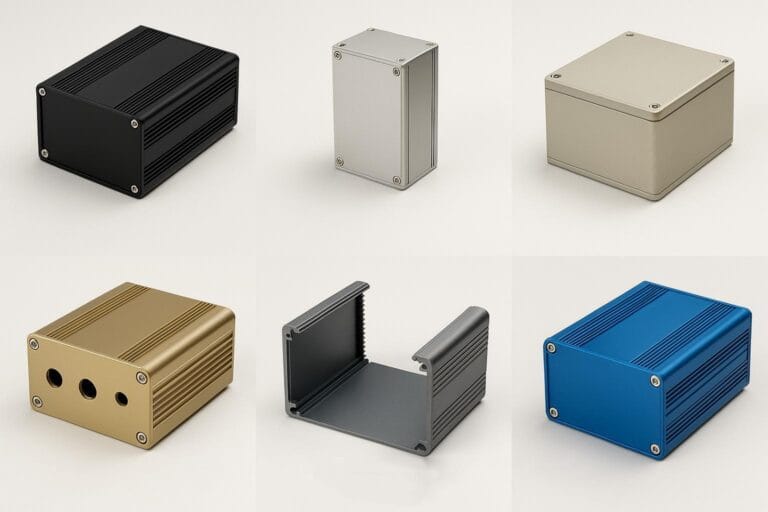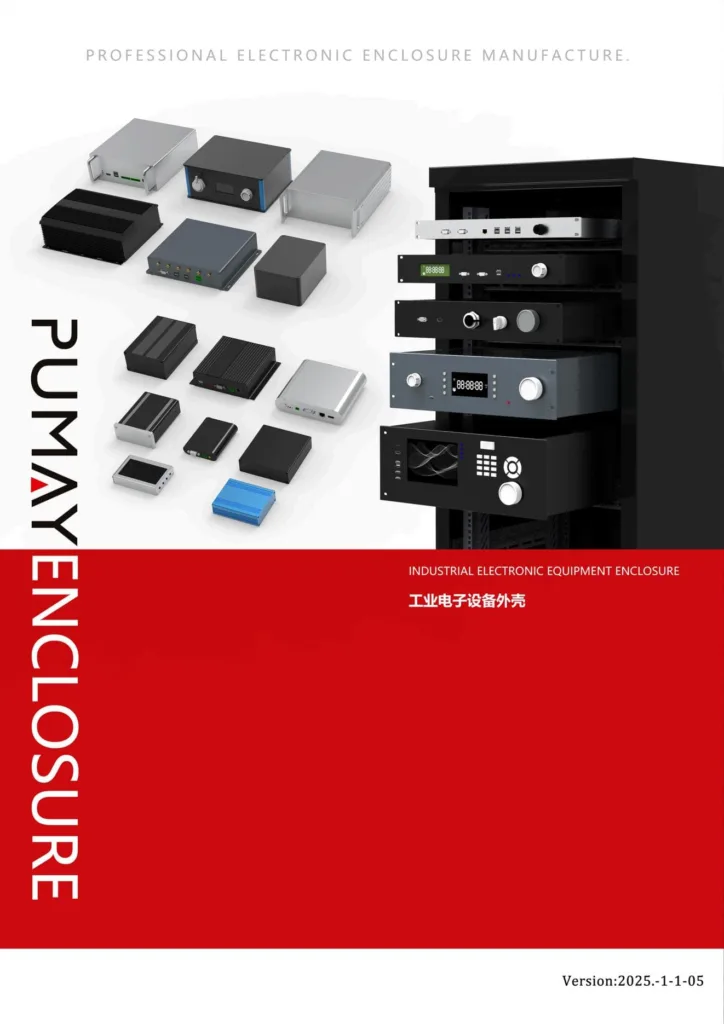Choosing the right housing for your electronics is confusing. A bad choice can lead to product failure, a cheap appearance, and costly delays, undermining your entire project's success.
An aluminum enclosure1 is a protective housing for electronics, valued for being lightweight, strong, and excellent at dissipating heat. It is customized with CNC machining2 and professionally finished with processes like anodizing3 to protect and brand your device.
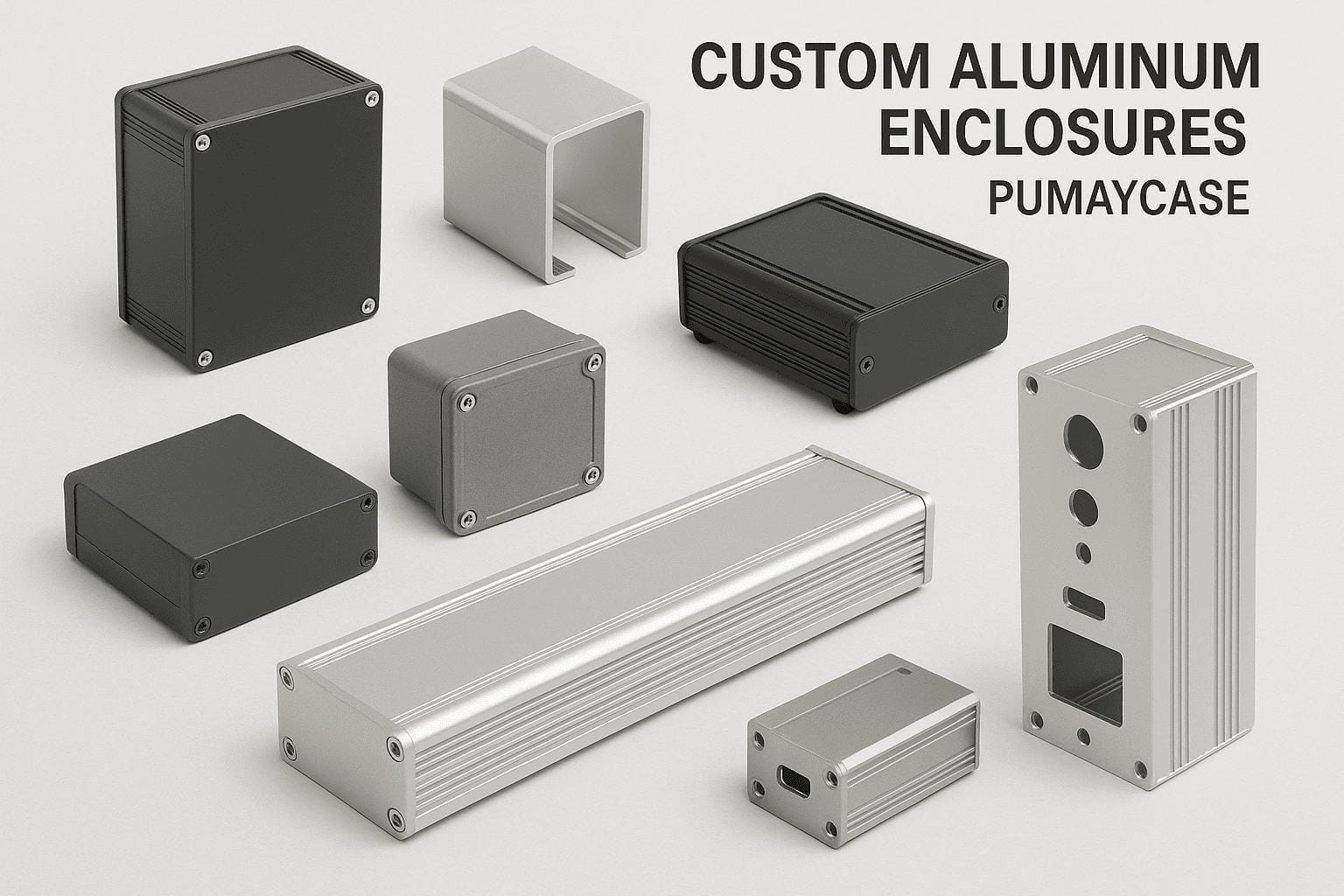
Over my decade in this industry, I've seen so many brilliant engineers get bogged down by the same set of questions about enclosures. It's a critical part of product design, but it's not always taught in school. You're an expert in circuits and software, but suddenly you have to become an expert in metallurgy and manufacturing processes, too. My goal here is to answer these common questions in plain language. I want to demystify the process so you can make informed decisions with confidence and get back to what you do best: innovating.
What makes an aluminum enclosure so special?
Your electronics are sensitive and need reliable protection. Plastic enclosures feel cheap and can't manage heat, leading to poor performance or even complete failure of your device.
An aluminum enclosure is a case made from alloys like 6061 or 6063. It shields electronics from impact, dust, and water (IP rating4) while also acting as a heat sink to keep components cool and performing reliably.
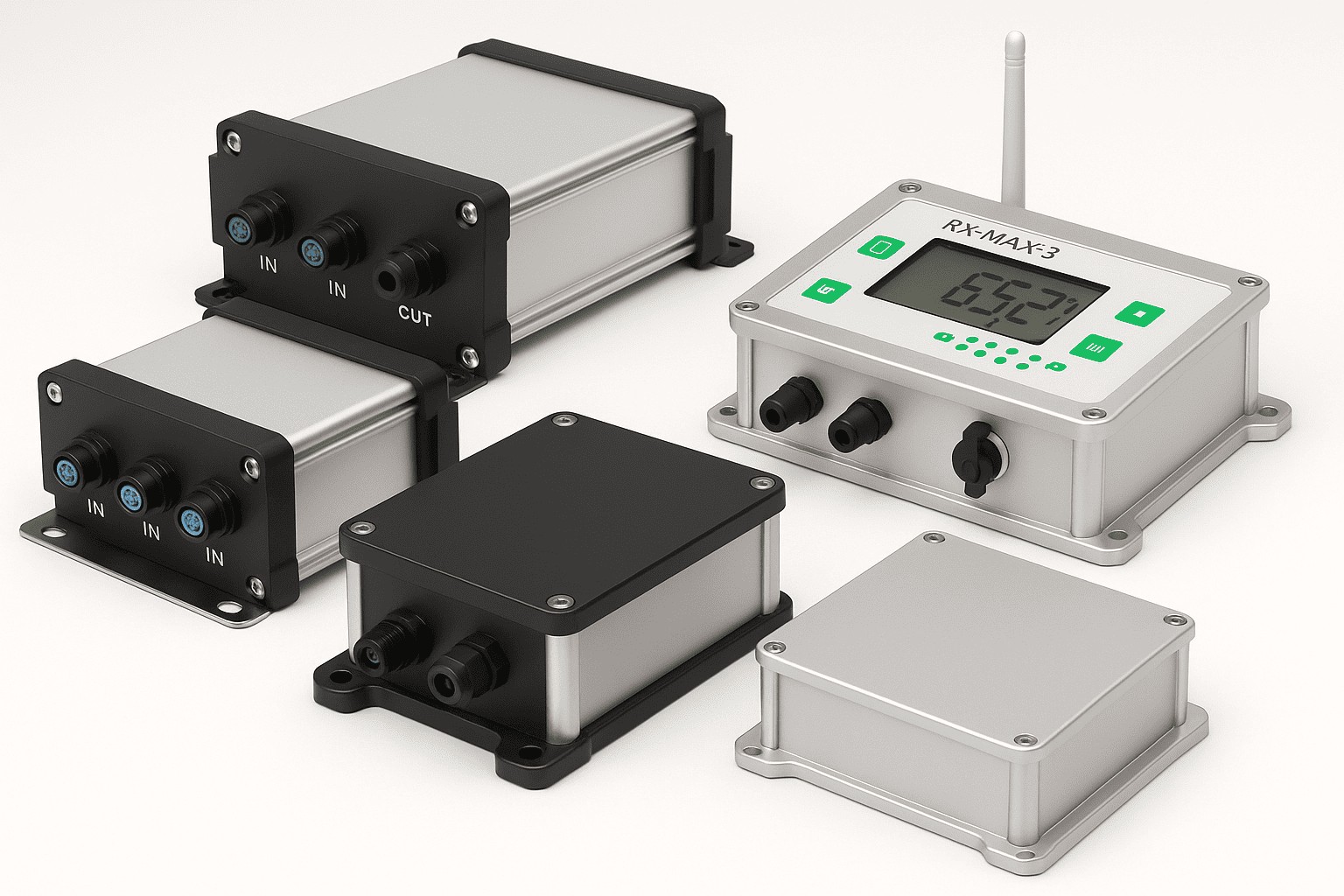 Aluminum enclosure providing environmental protection
Aluminum enclosure providing environmental protection
An aluminum enclosure does three jobs incredibly well. First, it offers robust physical protection5. It's much stronger than plastic and can be designed to meet specific impact ratings (IK ratings). Second, it provides environmental sealing6. With the right gaskets and design, an aluminum enclosure can be made fully waterproof and dustproof, achieving high IP ratings like IP67. This is something open frames or vented plastic cases just can't do. Third, and perhaps most important for modern electronics, it offers superior thermal management7. Aluminum is an excellent conductor of heat. The entire body of the enclosure acts as a giant heat sink, drawing thermal energy away from your processor and other critical components. This passive cooling can eliminate the need for fans, saving cost, space, and a potential point of failure. It's this unique combination of strength, sealing, and heat dissipation that makes aluminum the go-to choice for serious electronic devices.
| Feature | Aluminum Enclosure | Plastic Enclosure |
|---|---|---|
| Strength | High | Low to Medium |
| Heat Dissipation | Excellent | Poor (Insulator) |
| EMI/RFI Shielding | Excellent (Inherent) | Poor (Requires special coating) |
| Premium Feel | High | Low |
What kind of paint do you use on aluminum enclosures?
You need a professional, durable finish. You worry that a painted surface will just chip or scratch off, making your expensive, high-tech product look cheap and worn out.
We avoid traditional paint. The industry standard is anodizing, an electrochemical process that creates a hard, corrosion-resistant oxide layer8 integral to the metal itself. For graphics, we use durable silk-screen inks9, not paint.
 Anodized finish on an aluminum enclosure
Anodized finish on an aluminum enclosure
Thinking about the finish as "paint" is a common misunderstanding. Paint is a coating that sits on top of the surface, ready to be scratched off. For a truly professional and durable finish on aluminum, we use two main processes. The most popular is anodizing. This isn't a coating; it's a conversion. We submerge the aluminum part in an acid bath and pass an electric current through it. This grows a very hard, uniform layer of aluminum oxide right from the base metal. It's incredibly durable and corrosion-resistant. We can then dye this layer, with black being the most common color. Another option is powder coating, where a dry powder is sprayed onto the part and then baked in an oven. This creates a thick, durable, and colorful finish that is much tougher than liquid paint. For adding logos and labels, we use silk-screening, which applies a permanent epoxy ink for a crisp, tough finish.
| Finishing Method | Description | Best For |
|---|---|---|
| Anodizing | An integral, hard oxide layer | A premium, durable, metallic look |
| Powder Coating | A baked-on, thick plastic coating | A wide range of colors and textures |
| Silk-Screening | A printed layer of durable epoxy ink | Logos, text, and connector labels |
What is the best material for an enclosure?
Choosing the right enclosure material is critical. Steel is heavy and plastic can't handle heat, forcing you into a corner where you have to compromise on your product's design.
For most modern electronics, aluminum is the best material. It provides an unmatched balance of strength, light weight, thermal conductivity (for heat dissipation), and natural corrosion resistance, giving your product a premium look and feel.
 Comparing enclosure materials: aluminum vs steel vs plastic
Comparing enclosure materials: aluminum vs steel vs plastic
The "best" material always depends on your specific needs, but for the challenges an engineer like Jeff faces, aluminum almost always comes out on top. Let's compare it to the other common options. Steel is very strong and cheap, but it's also very heavy and rusts easily unless it's treated. This makes it a poor choice for portable or high-end equipment. Plastic is lightweight and cheap in very high volumes (once you've paid for the expensive mold), but it feels less professional, offers poor EMI shielding, and is a thermal insulator, meaning it traps heat inside. Aluminum hits the sweet spot. It's strong yet lightweight, making it perfect for both rack-mounted and field equipment. Its natural thermal conductivity is a massive advantage. It also has a natural resistance to corrosion and provides excellent EMI/RFI shielding. While its upfront cost per piece might be higher than plastic, it offers far more value and performance.
| Material | Strength-to-Weight Ratio | Thermal Conductivity | Corrosion Resistance |
|---|---|---|---|
| Aluminum | Excellent | Excellent | Excellent |
| Steel | Good | Poor | Poor (must be treated) |
| Plastic | Poor | Very Poor (Insulator) | Excellent |
How do you make a metal enclosure?
You have a final design, but how does it actually become a real product? The manufacturing process can seem like a mysterious black box, making it difficult to plan your project.
The process starts with an aluminum extrusion or plate. The material is cut to size, then CNC machined for all custom features. Finally, it's deburred, anodized for protection and color, and printed with any required graphics.
 How a metal enclosure is made
How a metal enclosure is made
Let me walk you through the journey your enclosure takes in our factory. It's a precise, step-by-step process we have perfected over years.
Step 1: Extrusion & Cutting
It begins as a long, 10-foot profile shape, created by pushing a hot billet of aluminum through a die. We then cut this long profile down to the exact length needed for your enclosure.
Step 2: CNC Machining
This cut piece then goes to a high-speed CNC machine. Following the instructions from your 3D CAD file, it precisely mills all the custom openings for your connectors, LEDs, vents, and mounting points.
Step 3: Finishing and Graphics
After machining, the part is deburred to smooth any sharp edges. It then gets its protective and decorative anodized finish. If your design includes a logo or labels, it then moves to our silk-screening department before a final quality inspection and careful packaging. This integrated workflow under one roof is how we control quality and lead times.
What are the disadvantages of aluminum panels?
You've heard that aluminum is a great material, but you're a careful engineer. You know every material has trade-offs, and you need to understand the potential downsides before you commit.
The primary disadvantages are its higher material cost compared to plastic and its electrical conductivity. As a conductive metal, it requires careful internal layout design to prevent short circuits between the electronics and the case.
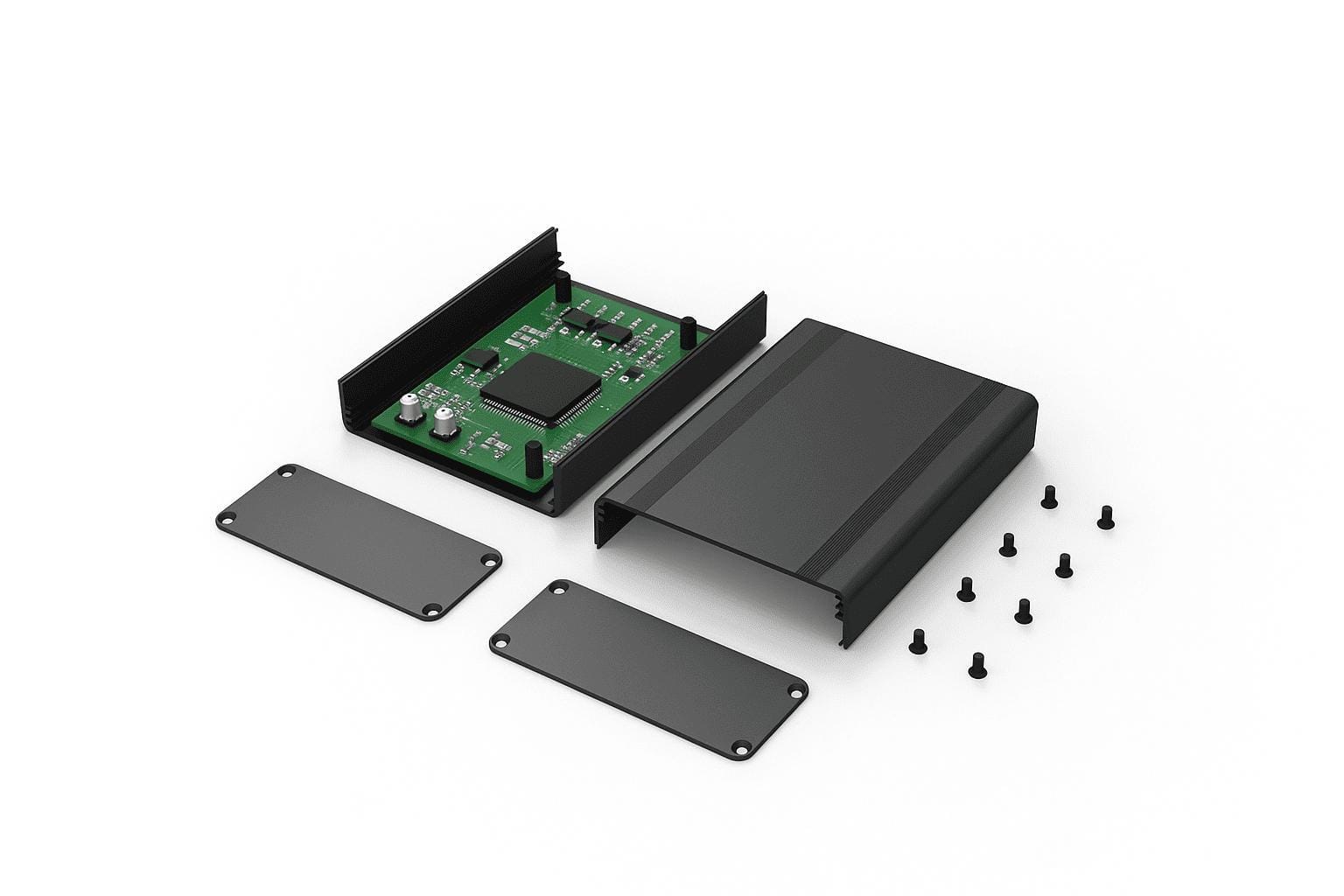 Mitigating disadvantages of aluminum panels
Mitigating disadvantages of aluminum panels
It's smart to look at both sides of the coin. While aluminum is fantastic, it's not perfect for every single application. The first consideration is cost. Raw aluminum is more expensive than raw plastic or steel. For projects with extremely high volumes (hundreds of thousands of units), the cost of an injection mold for plastic can be justified, making the per-piece price lower. The second point is electrical conductivity. This is both a pro and a con. The conductivity is what provides great EMI shielding, but it also means a bare circuit board can't touch the inside of the case without causing a short circuit. This is easily managed with good design practices, like using standoffs to mount your PCB and ensuring proper grounding, but it is a factor you must consider during your design phase. Lastly, while strong for its weight, aluminum is softer than steel and can be more prone to dents from sharp, high-energy impacts.
| Disadvantage | Explanation | How to Mitigate |
|---|---|---|
| Cost | Higher raw material cost than plastic or steel. | Use standard profiles; focus customization on flat panels. |
| Conductivity | Can cause short circuits if electronics touch the case. | Use standoffs, insulators, and proper grounding design. |
| Softness | Softer than steel, can dent more easily under sharp impact. | Design with appropriate wall thickness for the application. |
What is the difference between a cage and an enclosure?
You hear terms like cage, chassis, and enclosure used all the time. This vague language can lead to serious miscommunication with suppliers, getting you a product that doesn't meet your needs.
An enclosure fully surrounds and seals the contents, protecting them from the environment (dust, water). A cage is just a frame, offering structural mounting but leaving the sides open to airflow, providing no environmental sealing.
 Difference between an enclosure and a cage
Difference between an enclosure and a cage
The difference comes down to one key function: sealing. The entire purpose of an enclosure is to create a controlled environment. It's a sealed box designed to protect the sensitive electronics inside from everything on the outside—dust, moisture, fingers, and EMI. When we talk about IP ratings like IP67, we are talking about the sealing capability of an enclosure. A cage, or chassis, has a different job. Its primary purpose is to provide a strong, rigid structural frame for mounting components, especially in a standardized format like a 19-inch rack. A subrack or card cage, for example, holds multiple circuit boards securely while allowing for maximum airflow between them for cooling. An engineer like Jeff, who needs an IP67 rating for a field instrument, absolutely needs an enclosure. Someone building a server in a climate-controlled data center would use a cage or chassis.
| Feature | Enclosure | Cage / Frame |
|---|---|---|
| Primary Goal | Sealing & Environmental Protection | Structural Support & Mounting |
| Airflow | Limited / Controlled | High / Open |
| IP Rating | Yes (e.g., IP67) | No |
| Typical Use | Field instruments, industrial controls | Data centers, test equipment racks |
Conclusion
Understanding these fundamentals—from materials and finishes to the manufacturing process—empowers you to make smart decisions. This knowledge ensures you create a durable, professional, and ultimately successful product.
Explore the advantages of aluminum enclosures, including durability and heat dissipation, to enhance your electronics project. ↩
Learn how CNC machining can provide precision and customization for your electronic housing needs. ↩
Discover the anodizing process and its benefits for protecting and branding your electronic devices. ↩
Discover the significance of IP ratings in protecting electronics from dust and water, ensuring longevity and reliability. ↩
Understanding the benefits of physical protection can help you choose the right enclosure for your electronics. ↩
Exploring environmental sealing will reveal how it enhances the durability and reliability of electronic devices. ↩
Learning about thermal management can help you appreciate how aluminum enclosures improve device performance and longevity. ↩
Learn about the significance of corrosion-resistant oxide layers in protecting metal surfaces and enhancing longevity. ↩
Explore the advantages of using durable silk-screen inks for graphics, ensuring long-lasting quality and appearance. ↩

